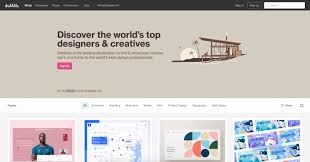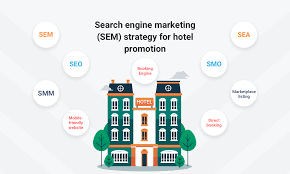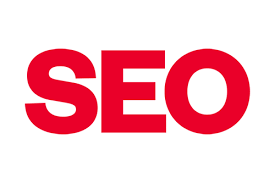The Importance of Web Design for Websites
Web design plays a crucial role in the success of any website. It encompasses various elements such as layout, color scheme, graphics, fonts, and user experience. A well-designed website not only looks visually appealing but also enhances user engagement and drives conversions.
Key Aspects of Effective Web Design:
- User Experience (UX): A user-friendly website with intuitive navigation and clear calls-to-action improves the overall user experience. Visitors are more likely to stay on a site that is easy to navigate and find the information they need.
- Visual Appeal: The visual elements of a website, including layout, color scheme, images, and typography, contribute to its overall appeal. A visually attractive website can leave a lasting impression on visitors and enhance brand perception.
- Mobile Responsiveness: With the increasing use of mobile devices, it is essential for websites to be responsive and adapt to different screen sizes. A mobile-friendly design ensures that users can access the site seamlessly across various devices.
- SEO-Friendly Design: Proper web design practices can improve a website’s search engine optimization (SEO) performance. Factors such as site speed, clean code, and optimized images contribute to better search engine rankings.
- Consistent Branding: Web design helps in establishing a consistent brand identity across all digital platforms. Consistent branding builds trust with visitors and reinforces brand recognition.
- Effective Call-to-Actions (CTAs): Well-designed CTAs encourage users to take desired actions on the website, such as making a purchase or signing up for a newsletter. Clear and strategically placed CTAs can significantly impact conversion rates.
In Conclusion
A well-designed website is essential for creating a positive online presence and engaging users effectively. By focusing on key aspects such as user experience, visual appeal, mobile responsiveness, SEO optimization, branding consistency, and effective CTAs, businesses can build websites that drive results and achieve their goals.
Contact us today to learn more about how our web design services can help elevate your online presence!
9 Key Benefits of Web Design: Elevate User Experience, Boost Traffic, and Strengthen Your Brand
- Enhances user experience
- Improves brand perception
- Increases website traffic
- Boosts search engine rankings
- Builds trust with visitors
- Drives conversions and sales
- Creates a professional online presence
- Adapts to various devices with responsive design
- Helps establish consistent branding
5 Drawbacks of Web Design Websites: Costs, Time, Maintenance, Skills, and Consistency Challenges
Enhances user experience
Enhancing user experience is a significant benefit of effective web design for websites. A well-designed website with intuitive navigation, clear layout, and engaging visuals ensures that visitors can easily find the information they need and enjoy a seamless browsing experience. By prioritizing user experience in web design, businesses can keep visitors engaged, encourage them to explore more content, and ultimately increase conversions and customer satisfaction. Good web design creates a positive impression on users, leading to repeat visits and improved brand loyalty.
Improves brand perception
Effective web design plays a crucial role in enhancing brand perception. A visually appealing and cohesive website design helps establish a strong brand identity, leaving a positive impression on visitors. Consistent branding elements such as color schemes, fonts, and imagery across the website create a sense of professionalism and credibility, ultimately building trust with users. By focusing on brand perception through web design, businesses can differentiate themselves from competitors and reinforce their unique value proposition in the minds of their target audience.
Increases website traffic
Effective web design plays a crucial role in increasing website traffic. By implementing SEO best practices, optimizing site speed, and creating user-friendly navigation, a well-designed website can attract more visitors and improve overall visibility on search engines. Additionally, visually appealing design elements and engaging content can encourage users to spend more time on the site, ultimately leading to higher traffic volumes and potential conversions.
Boosts search engine rankings
Effective web design can significantly boost search engine rankings for websites. By implementing SEO-friendly practices such as optimizing site speed, using clean code, and structuring content appropriately, a well-designed website can improve its visibility in search engine results pages. Search engines favor websites that offer a positive user experience, and a thoughtfully designed site that is easy to navigate and mobile-responsive can help attract more organic traffic and enhance overall online presence.
Builds trust with visitors
Building trust with visitors is a significant benefit of well-executed web design. A visually appealing and professionally designed website instills confidence in users, making them more likely to engage with the content and take desired actions. Consistent branding, clear navigation, and a polished layout all contribute to creating a positive impression that establishes trust and credibility with visitors. By focusing on building trust through effective web design, businesses can enhance their online reputation and foster long-term relationships with their audience.
Drives conversions and sales
Effective web design plays a pivotal role in driving conversions and sales for businesses. By creating a visually appealing and user-friendly website with clear call-to-action buttons and intuitive navigation, companies can guide visitors through the sales funnel and encourage them to make a purchase or complete a desired action. A well-designed website not only attracts potential customers but also instills trust and confidence in the brand, ultimately leading to increased conversions and sales revenue.
Creates a professional online presence
Effective web design plays a crucial role in creating a professional online presence for businesses and individuals. A well-designed website conveys credibility, trustworthiness, and expertise to visitors, making a strong first impression. By incorporating elements such as clean layout, high-quality visuals, cohesive branding, and user-friendly navigation, a professionally designed website can help establish a positive brand image and differentiate it from competitors in the digital landscape.
Adapts to various devices with responsive design
Responsive design is a key advantage of web design websites as it enables a seamless user experience across different devices. With responsive design, websites automatically adjust their layout and content to fit the screen size of smartphones, tablets, and desktops. This feature ensures that users can access the website easily and navigate through it without any issues, regardless of the device they are using. By adapting to various devices, responsive design enhances user engagement, improves usability, and ultimately boosts conversions for businesses.
Helps establish consistent branding
Effective web design plays a crucial role in helping businesses establish consistent branding across all digital platforms. By incorporating elements such as color schemes, typography, imagery, and overall design aesthetics that align with the brand identity, a well-designed website reinforces brand recognition and builds trust with visitors. Consistent branding not only enhances the overall user experience but also creates a cohesive and memorable online presence that resonates with the target audience.
High Cost
The high cost associated with professional web design services can pose a significant challenge for small businesses or individuals operating on a tight budget. Investing in a custom-designed website from experienced professionals may require a substantial financial commitment that some may find difficult to afford. This financial barrier can limit access to quality web design services, potentially hindering the ability of small businesses and individuals to establish a strong online presence and compete effectively in the digital marketplace.
Time-Consuming
Developing a custom website with intricate design elements can be a time-consuming process, potentially causing delays in the site’s launch. The need to carefully plan and execute complex design features, along with testing and revisions, can extend the development timeline. Time constraints may pose challenges for businesses aiming to quickly establish their online presence or launch new products/services. Balancing the desire for a visually appealing website with the practicality of timely delivery is a crucial consideration in web design projects.
Maintenance Required
Maintenance Required: One significant drawback of web design websites is the ongoing need for updates and maintenance. Ensuring that websites remain functional and secure requires regular attention, which can be both time-consuming and costly. From software updates to security patches, the maintenance aspect of web design demands continuous effort to keep the site running smoothly and protect it from potential vulnerabilities. Failure to prioritize maintenance can lead to performance issues, security breaches, and a negative impact on user experience.
Technical Knowledge Needed
One significant drawback of web design for websites is the technical knowledge required to grasp design principles and technologies. This can pose a challenge for individuals who lack a background in design or development. Understanding concepts such as layout, coding languages, responsive design, and user experience optimization may seem complex and overwhelming to those without prior experience in the field. As a result, navigating the intricacies of web design can be daunting and may require seeking professional assistance to ensure a website is effectively designed and functional for its intended purpose.
Risk of Inconsistency
The risk of inconsistency in web design websites poses a significant challenge, as it can result in a disjointed user experience and harm brand perception. When design elements vary across different pages or devices, visitors may struggle to navigate the site seamlessly and encounter confusion. Inconsistencies in layout, color schemes, fonts, or navigation can create a lack of cohesion and disrupt the overall user journey. Maintaining consistency in web design is crucial to establishing a strong brand identity and ensuring a cohesive experience for users across all platforms.




